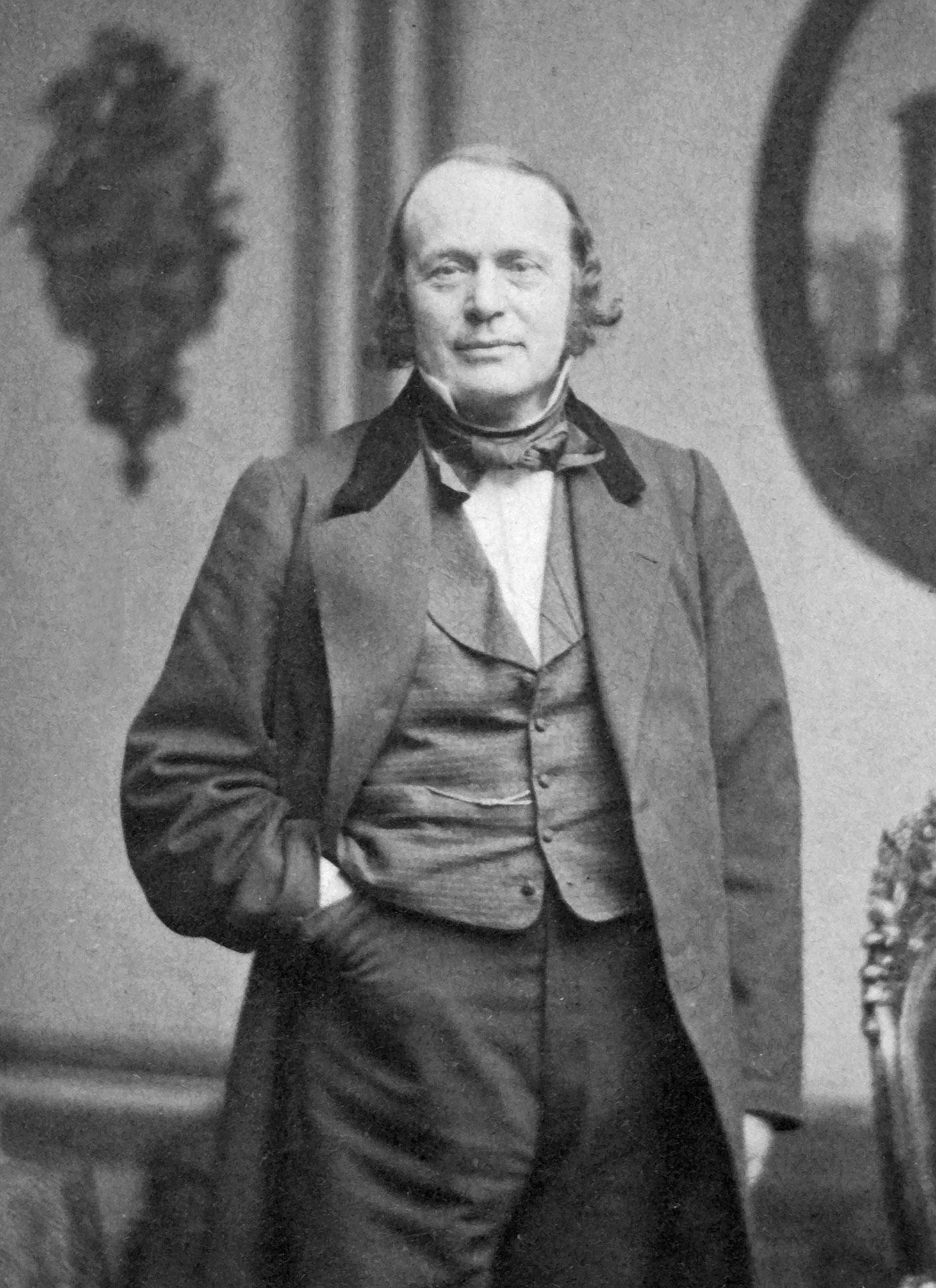Reviewing the legacy of racist scientists

Swiss psychiatrist Eugen Bleuler coined several now-common psychological terms such as schizophrenia, autism and ambivalence. He also believed “mental and physical cripples” should be sterilised in order to preserve racial purity. At a time when controversial historical figures are increasingly under the microscope, how should we judge scientists like Bleuler?
“Swiss individuals and institutions helped produce the toxic waste of scientific racism and played a leading role in international eugenics,” says Pascal Germann, an expert on the history of eugenics and racism at the University of Bern’s Institute for the History of Medicine.
“In other words, they didn’t merely follow the zeitgeist but actively shaped these ideologies and practices of exclusion. This should be a topic in schools and universities.”
Paul Eugen Bleuler (1857-1939) was born and died in Zollikon, near Zurich.
His sister, Pauline, five years his elder, had a psychiatric disorder.
His wife, Hedwig Bleuler-Waser, was one of the first women to receive her doctorate from the University of Zurich. She founded the Swiss Association of Abstinent Women.
Bleuler was an early proponent of the theories of Sigmund Freud.
In 2000, the asteroid (11582) Bleuler was named after him.
Bleuler, director of the Burghölzli psychiatric hospital in Zurich from 1898 to 1927, was a reformer. He took his psychotic patients seriously, focused on personal treatment and pushed for improvements in conditions. He championed a community environment for patients rather than institutionalisation, and he avoided the use of straitjackets where possible.
‘Negative value’ lives
However, his theory, and that of other psychiatrists, that undesirable behaviour was genetically transmitted was used to justify forced sterilisation and castration.

Writing in his seminal study of 1911, Dementia Praecox, or the Group of Schizophrenias, Bleuler noted that “castration, of course, is of no benefit to the patients themselves. However, it is to be hoped that sterilisation will soon be employed on a larger scale … for eugenic reasons”.
In the same article he claimed that “most of our worst restraining measures would be unnecessary if we were not duty bound to preserve the patients’ lives which, for them as well as for others, are only of negative value”.
In 1924 Bleuler wrote in the Textbook of Psychiatry: “The more severely burdened should not propagate themselves … If we do nothing but make mental and physical cripples capable of propagating themselves, and the healthy stocks have to limit the number of their children because so much has to be done for the maintenance of others, if natural selection is generally suppressed, then unless we will get new measures our race must rapidly deteriorate.”
Eugenics movement
This appeal for “new measures” was soon answered in Europe and the United States by various laws permitting compulsory sterilisation or worse, although murder was spun as euthanasia or mercy killing.
“Eugen Bleuler was an exponent of the eugenics movement, a scientific and political movement aimed at improving the genetic make-up of populations. To this end, it called for interventions in human reproduction and sexuality. People who were considered genetically ‘unhealthy’ and ‘inferior’ were to be excluded from reproduction, while the reproduction of ‘healthy’ and ‘valuable’ parts of the population was to be encouraged,” Germann says.
“Although eugenics was accompanied by a rhetoric of exclusion and hardness, it gained its persuasive power through a ‘positive’ message: disease and suffering were to be prevented, health was to be promoted. In this respect, eugenics can be placed in the context of modern health efforts which aimed to improve life.”
Germann points out that eugenics was also a modern movement because it was strongly based on the latest scientific findings and technology. “These ambivalences must be stressed in order to understand why eugenics had such a strong appeal to so many eminent scientists and physicians,” he says.
Criticism
In Switzerland forced sterilisations took place throughout the 20th century. According to a 1991 study by the Swiss Nursing School in Zurich, 24 mentally disabled women aged 17-25 were sterilised between 1980 and 1987. In addition, the story of the Swiss gypsy people, known as the Jenisch, exposed a calculated policy of Nazi-style eugenics carried out behind closed doors well into the 1970s.

More
Teenage prisoners receive government apology
“Eugenics was an international movement that was capable of connecting to a wide variety of political ideologies and had very different manifestations: there was not only fascist and nationalist eugenics, but also liberal, socialist and Catholic eugenics,” Germann says.
“Eugenic thinking was widespread in the early 20th century, especially among physicians and psychiatrists, but also among many natural and social scientists. Eugenics was also supported by leading geneticists, for example. However, it would be wrong to assume that eugenics simply reflected the spirit of the age. There was vehement criticism of eugenics early on, for example from Catholic circles, but also from scientists and physicians who rejected eugenic demands on scientific and/or moral grounds.”
Good Bleuler vs bad Bleuler
Bleuler certainly wasn’t the only scientist at the time to have views that are now considered unacceptable. The explicit racism of Swiss biologist and geologist Louis Agassiz, for example, continues to generate controversy.
So how, as Switzerland debates its past and controversial monuments, should we weigh up the legacy of “problematic” scientists from more than a century ago?

More
Switzerland joins debate about removing controversial memorials
Is it possible to say that Bleuler was basically a good man with good intentions – he did after all seem to genuinely care about his patients? Can one separate the good Bleuler from the bad Bleuler?
“No, that doesn’t seem to make sense to me. It’s more plausible that figures like Bleuler were influenced by the ambivalences of modernity. The science-based health efforts of modernity produced great achievements, but they often also led – and eugenics is just one particularly drastic example here – to exclusion and marginalisation. Or in the worst case were associated with a racism that regarded entire sections of the population as unhealthy, inferior and unworthy of life,” Germann says.
“The fact that some eugenicists were ‘good’ scientists does not mean that their research was morally acceptable or politically harmless. You can’t separate the one from the other.”

In compliance with the JTI standards
More: SWI swissinfo.ch certified by the Journalism Trust Initiative














You can find an overview of ongoing debates with our journalists here . Please join us!
If you want to start a conversation about a topic raised in this article or want to report factual errors, email us at english@swissinfo.ch.